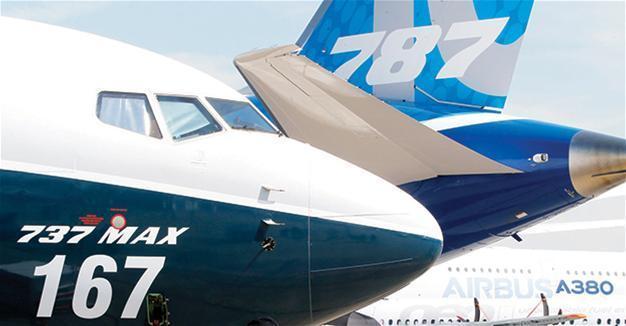Boeing lifts 20-year industry demand forecast to $6 trillion
PARIS - Reuters
 Boeing revised up its rolling 20-year industry forecast for passenger and freight planes by 4 percent on June 20, though signs at the world’s biggest air show suggest a cooling of demand at the moment after years of red-hot growth.
Boeing revised up its rolling 20-year industry forecast for passenger and freight planes by 4 percent on June 20, though signs at the world’s biggest air show suggest a cooling of demand at the moment after years of red-hot growth. The U.S. planemaker continued to rack up orders at the Paris Airshow for a new version of its best-selling 737 aircraft, which was launched amid a flurry of deals.
Leasing firm Aviation Capital Group (ACG), for example, said on Tuesday it had placed an order for 20 of the new 737 MAX 10 jets, worth a total of $2.5 billion at list prices.
“It is getting a big endorsement from airlines and that is leading to more lessors endorsing it too,” Ihssane Mounir, Boeing vice president for sales and marketing, told reporters.
But analysts expect demand at the June 19-25 event to fall short of recent years, and some aviation companies themselves have cut back staff and hospitality at the show.
Over the longer-term, though, Boeing sees an industry in rude health, forecasting 41,030 industry deliveries over the next two decades, up from 39,620 in a similar projection a year ago and topping $6 trillion in value.
That includes a five percent increase in the 20-year forecast for deliveries of single-aisle aircraft like the Boeing 737 and Airbus A320 families, respectively the cash cows of the world’s two largest aircraft manufacturers.
Boeing now expects 29,530 deliveries in the medium-haul single-aisle category, which is popular with low-cost airlines.
Planemakers also see growing opportunities in aviation services. Boeing forecast that market could be worth $8.5 trillion over 20 years, growing at an average 4 percent a year.
Air travel has been on a sharp uptrend, led by emerging economies as China looks set to replace North America as the world’s biggest transport market in coming years.
But China’s growth is now slowing even though it remains above 6 percent a year. Boeing trimmed its 20-year forecast for average global traffic growth to 4.7 percent from 4.8 percent.
Airbus took a similar step in its own 20-year forecast released earlier this month, while increasing the projection for total deliveries by 6 percent, compared with last year’s edition, to 34,899 aircraft.
Boeing’s overall tally is a bigger number partly because it counts aircraft with 90 seats or more, whereas Airbus starts at 100 seats.
In a symbolic change likely to rankle with its European rival, Boeing ditched its forecast for very large four-engined airplanes such as the Airbus A380 and its own 747-8.
For the first time, it lumped these together with large two-engined jets such as the Boeing 777 and largest A350.
















